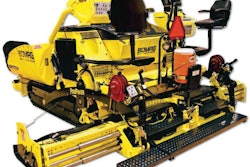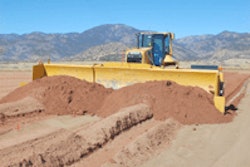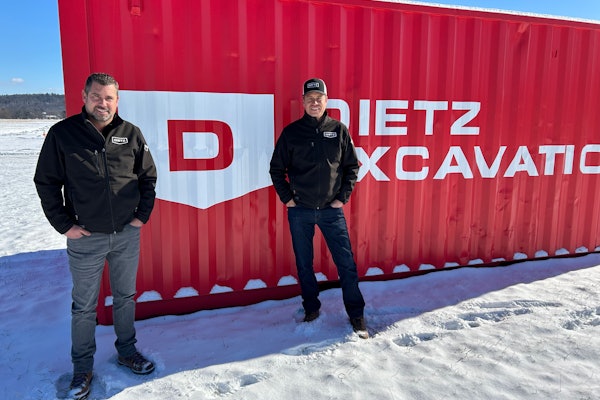Soft, compressible soils provide special challenges to the construction of transportation infrastructure projects. Geofoam and ground improvement techniques can be used in these soils to get roads and bridges in place quickly, while reducing long-term maintenance costs.
by Matt Fielding, P.E and Rick Chestnut, P.E., P.G.
Soft, compressible soils provide special challenges to the construction of transportation infrastructure projects. These soils may be so weak that typical construction would result in a global stability failure and when this is not the case, short-term or long-term settlements may be unacceptable or result in continuing maintenance problems. In these situations, lightweight fill or ground improvement techniques can be used to get roads and bridges in place quickly, while reducing long-term maintenance costs.
What is geofoam?
Many lightweight fill options exist, and among the lightest of these is geofoam, which is the generic name for cellular foam material used in geotechnical applications. This material is typically made from expanded polystyrene (EPS), which is similar to the typical Styrofoam cup.
Because this material weighs about 1 to 2 pounds per cubic foot (compared to about 130 pounds for soil), the load it induces on the underlying soil is significantly less than is typical for soil fill. In particularly soft soils, the geofoam can be designed to have a “net-zero” effect, meaning that the stresses induced after construction is complete are equal to or less than those that existed prior to construction. This is accomplished by removing an appropriate volume of soil and replacing it with geofoam. When done properly, the soil essentially does not even “feel” like anything has changed.
Geofoam is manufactured in blocks of varying sizes (typically no more than 16 feet in length) that are stacked in alternating directions to form the bulk of the embankment being constructed. Some of the potential risks with geofoam include that the blocks are flammable, will float, will dissolve if exposed to fuel, and are susceptible to damage. Protection is typically accomplished by placing soil over slopes formed with geofoam and concrete facing elements in front of geofoam walls. Pavement sections placed over geofoam must include enough material to reduce vehicle stresses (typically about 3 or 4 feet) and to prevent the roadway over the geofoam from becoming icy in the winter.
 Geofoam was used on the Frontrunner South project in Bluffdale, Utah, to reduce settlement magnitude around box culverts and drainage conduits and to reduce the potential for damage to rigid concrete structures. Pictured are geofoam blocks being placed to form a 40-foot tall fill between a box culvert and future commuter rail track.
Geofoam was used on the Frontrunner South project in Bluffdale, Utah, to reduce settlement magnitude around box culverts and drainage conduits and to reduce the potential for damage to rigid concrete structures. Pictured are geofoam blocks being placed to form a 40-foot tall fill between a box culvert and future commuter rail track.
Ground improvement
When soils are too soft to support imposed loads and lightweight fill is not appropriate or cost effective, the ground can be strengthened. Two methods that are often used are stone columns and deep soil mixing.
Stone Columns: While stone columns can be installed in many ways, the intent is to insert continuous columns of higher-strength crushed rock into the weaker soils and to densify the adjacent weaker soils, where possible. These columns of compacted stone are typically 20 to 48 inches in diameter and extend down to more competent soil layers. The isolated columns are installed on a rectangular or triangular grid pattern.
 Stone columns were recently used to strengthen foundation soils and mitigate liquefaction hazards on a U.S. Highway 30 bridge project near Lava Hot Springs, Idaho. The stone columns extended up to about 60 feet below the ground surface and supported mechanically stabilized earth (MSE) walls at the bridge abutments.
Stone columns were recently used to strengthen foundation soils and mitigate liquefaction hazards on a U.S. Highway 30 bridge project near Lava Hot Springs, Idaho. The stone columns extended up to about 60 feet below the ground surface and supported mechanically stabilized earth (MSE) walls at the bridge abutments.
Stone columns can improve global stability, increase bearing capacity, and reduce liquefaction potential in loose cohesionless soils. However, all soft soils cannot be treated with stone columns. Very soft clays and organic soils typically provide inadequate lateral support for the stone columns, which can result in bulging of the stone into the surrounding soils.
Deep Soil Mixing: Deep soil mixing (DSM) improves foundation soils by mixing “binders” into the ground. The mixing takes place below the ground surface and is accomplished with specialized equipment. Binders are mixed into the soil as an auger is advanced to the design depth and retrieved back to the surface. Deep soil mixing can be used even in very soft soils where stone columns would not be suitable.
The DSM binders can be placed in a dry or wet form and typically consist of Portland cement or quick lime. Columns of these binder and soil mixtures are typically installed immediately adjacent to each other to construct subsurface walls or cellular grids. Similar to stone columns, DSM can be used to reduce settlement, improve bearing capacity and global stability, and mitigate the effects of seismic activity.
 Deep soil mixing (DSM) was used on the Pioneer Crossing project in Lehi, Utah, to improve subgrade soil strength and increase global stability for bridge approaches.
Deep soil mixing (DSM) was used on the Pioneer Crossing project in Lehi, Utah, to improve subgrade soil strength and increase global stability for bridge approaches.
Speeding up settlement
Sometimes soils are strong enough to support applied loads without having to resort to lightweight fill or ground improvement, but are still very compressible. One of the problems with compressible clays is that they can take several months or even years to undergo initial settlement (primary consolidation). Using wick drains and surcharges can dramatically accelerate settlement.
Wick drains, also known as prefabricated vertical drains or PVDs, have essentially replaced sand drains because of their cost advantages. Wick drains have a rectangular cross section and consist of a geotextile jacket surrounding a plastic core. They are designed to allow water within the settling soils to be collected and then transmitted along the core. When a surcharge (fill that is in excess of what is required to construct the embankment) is placed in conjunction with wick drains, completion of primary consolidation is even more rapid. Surcharges can even be designed to reduce long term settlement, thereby reducing maintenance costs.
Whether it is lightweight fill, stone columns, surcharges, wick drains or deep soil mixing, the foundation of our infrastructure can be improved with these innovative solutions. Implementation of these solutions should be undertaken in consultation with an experienced geotechnical engineer.
Matt Fielding, P.E., is the office manager of Terracon’s Boise office and Rick Chestnut, P.E., P.G., is the office manager of Terracon’s Salt Lake City office. Terracon, an employee-owned engineering consulting firm, provides geotechnical, environmental, construction materials and facilities services from more than 100 offices nationwide with more than 2,700 employees.












